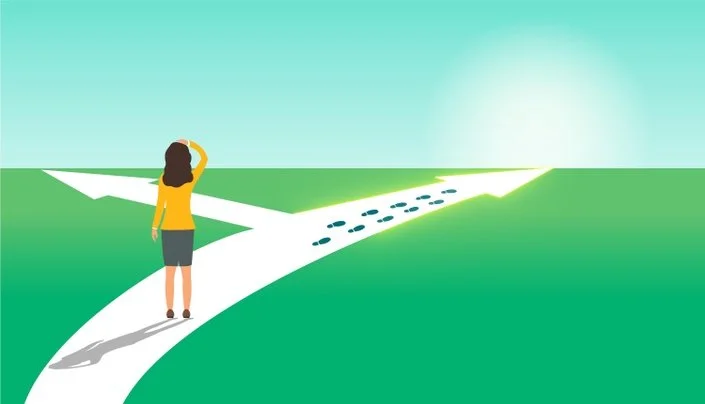Architecture as applied science
/On November 29th, on the occasion of webinar “ GESTALTART among Art, Therapy and Neuroscience”, organized by the MaRT of Rovereto (TN) and the UrLA association, I talked about the relationship that binds architecture, neuroscience and psychology together. The thematic context of the conference could not have been more appropriate, since it is in the Gestalt movement that the so called neo-humanism roots (the new cultural context that underlies the paradigm of design) lie. At its own time the perceptual theory of Gestalt realized how the experience of reality is the result of an individual interpretation, and that the objectivity of phenomena does not count for a qualitative evaluation of space. Kurt Lewin's field theory, also of Gestalt matrix, extended the attention from processes of perception to social and group ones, and explained how our behaviors depend on living spaces as well as on the people living there.
Unfortunately, the movement lacked solid scientific evidence that would explain the perceptual and behavioral phenomena detected, but it has the merit of having set up, later on, a new path of investigation, an interdisciplinary applicative area that would validate the results in a purely scientific field, besides stimulating further investigation.
Awareness of interaction between human and the environment, and the subsequent availability of scientific evidence in the new millennium, has elevated (neuro)architecture to the rank of applied science. Neuroarchitecture is a practice that can be considered therapeutic, or even better, salutogenic, because it does not cure illness generated by unhealthy spaces, but prevents it, creating the conditions for well-being at 360 degrees. The various scientific references of this new interdisciplinary approach concern mainly cognitive sciences, neurophysiology and psychology, but other disciplines which apparently seem very distant , such as biology, genetics, mathematics and physics, play also an important role.
Wilson introduced the term biophilia thanks to his book published in 1981, and with it the biophilic hypothesis was born. Such hypothesis not only explains principles such as beauty, good and fair, but also yields to further investigations in biological and epigenetic fields.
A more mathematical approach is represented by the "spatial syntax" (Space Syntax), which is an analysis methodology that translates social and individual behaviors into graphs and matrices, and is capable of expressing the qualitative aspects of space with numerical data, predicting its ability to attract or repel people according to set targets. Anticipating future scenarios and controlling over any perturbative phenomena become a very useful tool to ensure the success of artifacts, whatever are their scale of intervention.
Another numerical interpretation concerns fractals. The fractal is the invariant geometric entities which, repeating themselfs in different scales, helps to decode the shapes that surround us and distinguish simple shapes from complex ones. The analysis of fractals helps to decipher the subliminal messages that the geometries of the environment transmit to our unconscious, and capture the delicate balance between complexity and simplicity, that is the tension that exists between the annoying and tiring stimulus and the boring and flat one.
But the science of design doesn't end here. Other important interactions and contaminations, in addition to the scientific ones, support the design theory in an open and infinite process. The science of design exists, (we can finally give a positive answer to Gropius' question of 1947 (1)), but it will never be exact, because it evolves according to an asymptotic curve, which tends to dominate the complex and dynamic reality, without but never succeed completely.
The Krebs Cycle of Creativity shown below manages, better than words, to express this strong creative tension that binds together not only architecture and science, but also art and technology (engineering), going beyond the relationship of two to we are already used to. The relationship between art and design is easily understood since the two disciplines distinguished themselves after being born and lived for a long period as one.
Later on it is technology to go through the same kind of emancipation, when the industrial revolution separates skills (art and technique) that once coincided. The last decades are getting us used and familiarized with a new phenomenon, the close collaboration between art and technology. The interactive art installations are capable to express new emotions through a new and more democratic language than the one expressed by painting and sculpture, although theancestral purpose of analyzing, breaking down and highlight the most mysterious aspects of our life are unchanged.
In this complex relationship of four, a double dichotomy and tension is created between the eternal and fixed principles of nature, and what, instead, is the result of a continuous evolution of culture and behavior, which constantly redefines necessity and utility of the acquired data (the artificial). Trivially, if this process worked perfectly and the right interactions occurred with the right timing, the creative product would be perfect and there would be no difference between artificial and natural, but this is not the case.
“The relationship between science, engineering, design and art is just like a clock, where you constantly shifting and moving from one domain to another, and the input for one domain becomes the output for another. Science converts information into knowledge, engineer converts knowledge into utility, design converts utility into culture behavior and context, and art converts the culture behavior and question our perception of the world. And when art meet science, it’s the Cinderella moment in the 12 o’clock.”
Quote above by Neri Oxman, ex model, designer and professor at the MIT Media Lab, where she leads the Mediated Matter research group. She created the above Krebs Cycle of Creativity.
Note (1) . Walter Gropis, Is There a Science of Design? Auckland University College, School of Architecture, 1954













